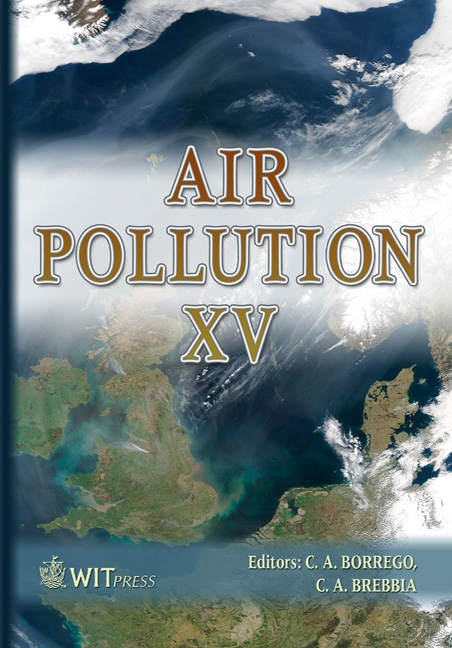Identification Of Particulate Matter And Vitreous Fibres In The Atmosphere Of A Megacity
Price
Free (open access)
Transaction
Volume
101
Pages
7
Published
2007
Size
676 kb
Paper DOI
10.2495/AIR070521
Copyright
WIT Press
Author(s)
P. Avino, C. Fanizza & M. Manigrasso
Abstract
This paper reports the preliminary results of our investigation. The levels of organic carbon, elemental carbon and PTS with their relative relationships and evidence of presence of man-made vitreous fibres are reported and discussed. These preliminary results underline the importance and the necessity of a systematic approach in such studies. Keywords: particulate matter, man-made vitreous fibres, elemental carbon, urban pollution. 1 Introduction The characterization of atmospheric particulate matter and man-made vitreous fibres represents a very important aspect for the air quality evaluation and for their relative effects on the population both in industrial areas and in a megacity. The particulate, also called \“aerosol” or \“dust”, is constituted by all the suspended non-gaseous material present in atmosphere. From the dimensional point of view the definition of the various kind of particulate contemplates four categories, according to the dimension of the particle aerodynamic diameter (da): ultrafine (da ≤ 0.1 µm); fine (0.1 µm ≤da ≤ 2.5 µm); coarse (2.5 µm ≤da ≤ 10 µm); total particulate matter (>10 µm). The particulate matter with aerodynamic diameter up to 50 µm is commonly called as particulate suspended matter (PTS). The chemical particle composition (carbonaceous fraction, organic fraction, metals, etc.) results important for the sanitary-toxicological aspect. In particular carbonaceous aerosols have been the focus of the attention in recent years because of their properties and their ubiquitous presence in atmosphere. Usually, carbonaceous aerosol constituents are classified into elemental carbon (EC), or
Keywords
particulate matter, man-made vitreous fibres, elemental carbon, urban pollution.





